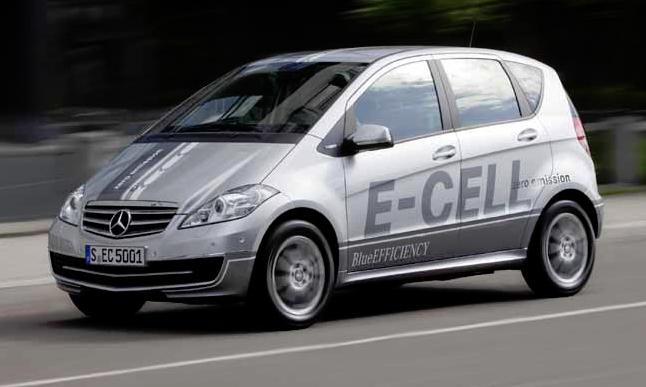
North America might be reluctant to end its love affair with gasoline, but a new Canadian venture is ready for when it inevitably happens, as Alan Swaby learns.
Lithium, apparently, is one of the most abundant minerals on earth. It has a role to play in the manufacture of ceramics and glass as a flux, in the foundry business as a casting aid, and as the core ingredient of lithium grease. But before the advent of mobile phones and laptop computers, not one in a hundred people would have heard of it.
Now, though, we’re all aware that lithium is the foremost battery material we currently know of. It has superior energy density and power-to-weight ratio—around three times greater than its nickel counterpart. It lasts longer and recharges quicker. Nor does it have a “memory” effect, meaning it can be charged up at any time, no matter the level of the current charge. It also carries on working at temperatures down to –60°C (–76°F).
All this is good news, but it’s the potential for automotive use that’s the real treasure chest. “China is buying lithium by the tanker load,” says Mitchell Lavery, director of Canada Lithium. “The two largest mines in the world—both in Australia—ship exclusively to China. Two years ago the Chinese were reported to be making 20 million electric scooters a year.”
But while Asia is galloping toward electric-powered vehicles and Europe is following behind at a fair canter, North America seems reluctant to embrace the technology with the same fervor. The US government has made $4 billion available in research grants, but still Detroit is reluctant to be weaned off gasoline.
Nevertheless, Canada Lithium is proceeding with its plans to open the first hard-rock lithium mine in the Americas. The location, in the Val d’Or area of Quebec, already has a history with lithium. In the 1950s it was mining the mineral as part of the US strategic metals plan, but when support was stopped in 1960 the mine struggled due to low demand and low prices. When a strike shut the mine in 1965, it never opened again for business, though Sullivan Mines kept the pumps going for another 20 years thanks to a (before its time) belief that one day lithium batteries would prevail.
Over the years the mine changed hands several times, always to gold mining interests, until 2008 when the directors of Canada Lithium made a strategic decision to get into lithium and acquired the leases. The Quebec Lithium Project consists of 12 claims covering 405 hectares (1,000 acres). There is a measured and indicated mineral resource of 31.6 million tonnes (metric tons) grading 1.11 percent Li2 and another 38.9 million tonnes in the inferred mineral resource category. The company has completed a pre-feasibility study for the development of the project and anticipates production of up to 19,300 tonnes of 99.5 percent lithium carbonate product annually, coming on stream as early as the end of 2012. Currently, the final stage of a full bankable feasibility study is under way and will be released in January.
Unlike the 1950s and ‘60s, the mine will no longer rely on the original 150-meter deep shaft to access the ore. Instead it plans to use open-pit mining. “It involves larger amounts of waste material,” admits Lavery, “but it also removes any restrictions on volumes that a shaft would impose, and the economies of scale give us a better bottom line and an inherently safer mining operation.”
To get the 19,300 tonnes of lithium, the mine will process 1 million tonnes of ore a year. It’s a figure that could be ramped up very quickly should demand warrant it by adding to the fleet of 150-tonne dump trucks and excavators that will be down the hole.
The chemistry behind the refining hasn’t changed much since the 1950s. Once the mineral-bearing ore has been separated from the spoil, it is milled and then, in a flotation process, collected in a 7 percent concentration. From there it is roasted at 1,100°C (2,012°F) to convert the molecules before being leached with sulfuric acid and dosed with soda ash until eventually the white powdered lithium carbonate is produced. The major challenge is to control the process sufficiently to produce battery-grade levels of purity—at least 99.5 percent. Laboratory studies and a small-scale pilot plant have both indicated that Val d’Or will satisfy this need.
Canada Lithium already has a five-year deal with Mitsui Metals, which will market the finished product in the Far East while the company itself will handle sales in North America and Europe. “Our location couldn’t be better for this,” says Lavery. “Val d’Or is an established mining area with excellent infrastructure. We’re served by good roads and rail links that puts US customers within 14-hour travel, and within seven hours product could be on the St. Lawrence River heading for Europe by sea.”
Even Quebec’s low-cost electricity works in the project’s favor, energy-hungry as it is, which is something of an irony since one of the future uses for lithium could be in house-size storage banks for off-peak wind or hydro electricity that then could be called on in high-peak periods.
All financial calculations have been made at a selling price of $2.70 per pound, though Lavery expects to do better than this. However, the business has been careful to assess the viability of the mine even if electric vehicles are beaten out by some other alternative to gasoline—hydrogen, for example.
Either way, Canada Lithium should get no hassle from environmentalists. The process is remarkably clean, with just quartz being deposited in the tailings dam. “When the mine was decommissioned after closing down,” says Lavery, “it went back to nature with little or no impact on the terrain—a clean process for one of the world’s cleanest fuels.” www.canadalithium.com













